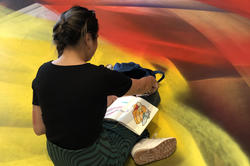Faculty members Catherine Andreozzi and Joy Ko lead a Wintersession course inspired by Jaipur’s rich handcrafting traditions.
Global Studies Program Brings RISD Students to NYC Biodesign Hub
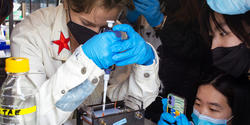
“It’s kind of like cooking,” says Industrial Design Professor Peter Yeadon as he describes the experience of creating biodegradable plastics like “coffee leather” and “biofoam” in Brooklyn’s community biolab Genspace. “There’s a lot of room for experimentation, and it’s very accessible.”
Yeadon and the 12 students who participated in his Wintersession global studies course, Biodesign NYC, had the opportunity to work directly with experts in the biomaterials field last month. “The main goal of the course,” he adds, “was being able to study bioactivity and engage experts in fields directly related to what the students are studying [in a city where they might find future opportunities].”
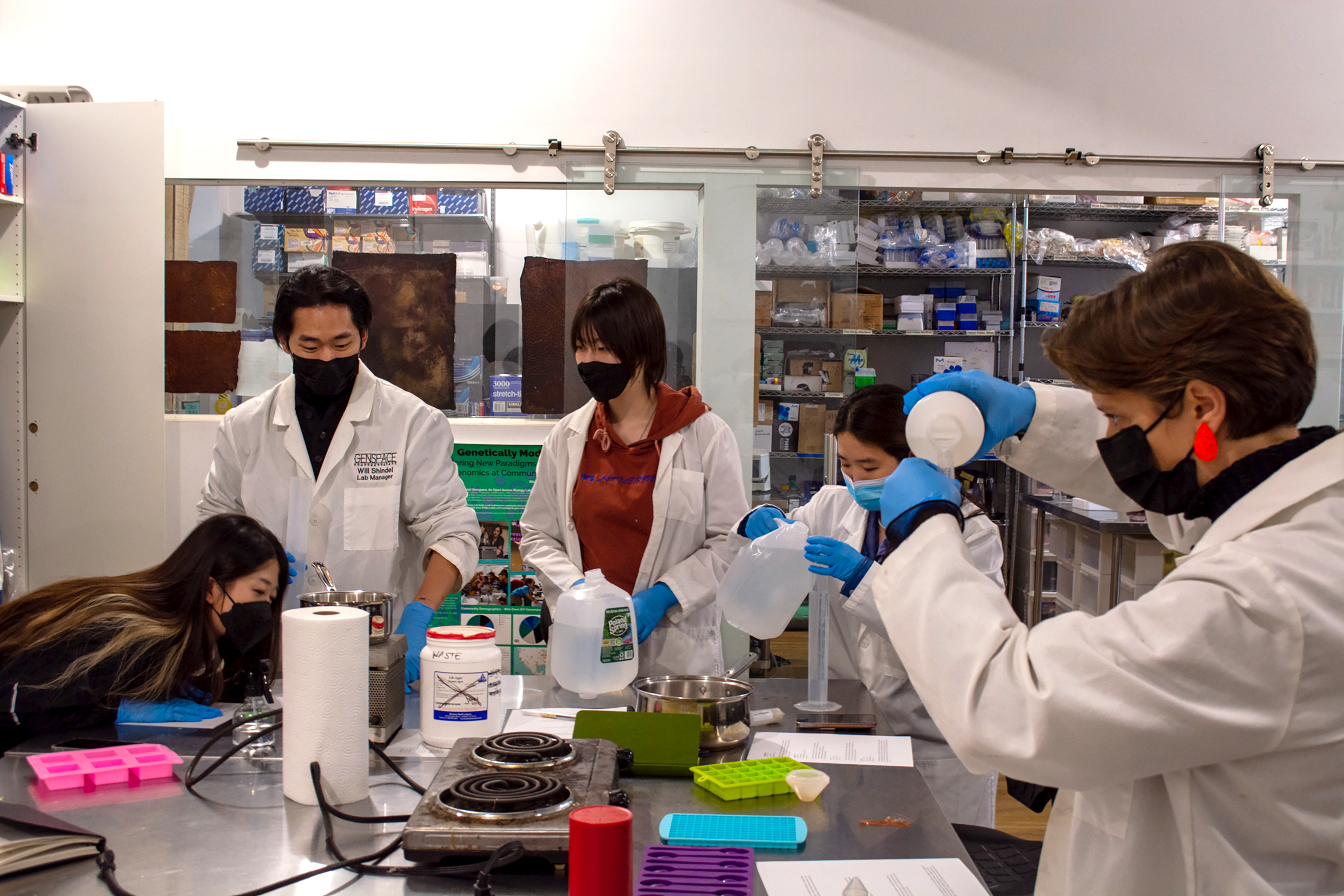
There is a lot of disagreement within the biodesign community about how biomaterials are defined, Yeadon explains, and whether or not they truly improve our carbon footprint. “We think of biodesign as sustainable or good for the planet because of the prefix ‘bio,’” he says, “but it can be just as harmful as anything else. If production requires the use of huge volumes of water, for example, or we design something that’s meant to biodegrade and it affects an ecosystem that it’s placed in, then that causes problems. The students are gaining an appreciation for that.”
“We think of biodesign as sustainable or good for the planet because of the prefix ‘bio,’ but it can be just as harmful as anything else.. . . The students are gaining an appreciation for that.”
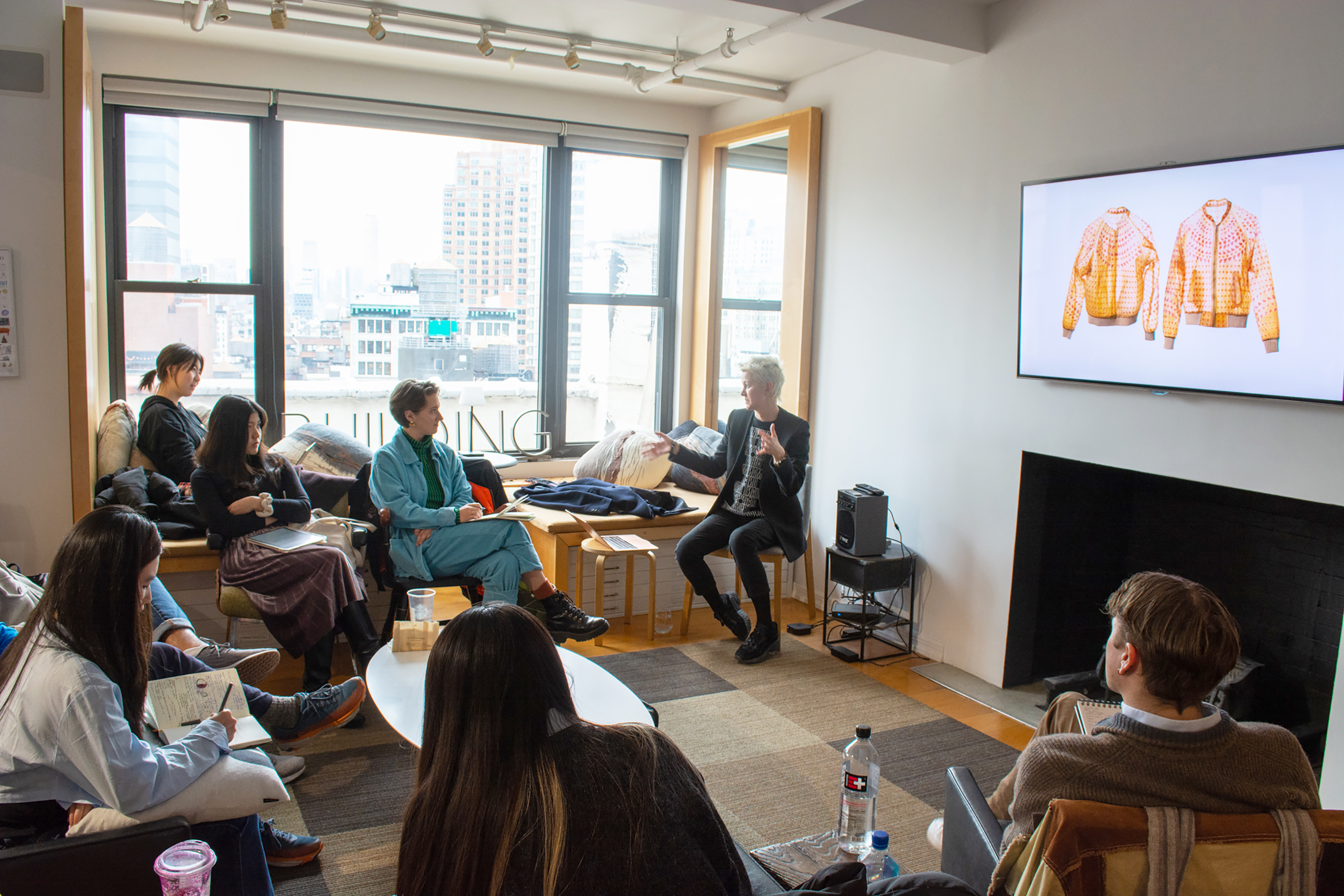
While sophomore Oscar Tangen 25 ID has felt pessimistic about the state of the world, often feeling that it’s “going in the completely wrong direction,” he noted that guest speaker Suzanne Lee, CEO and cofounder of the biodesign consultancy Biofabricate, “spoke about many projects that showed the future can be very bright and exciting.”
Tangen based his final project on the notion that emotions play a stronger role in changing our behavior than facts do. “Many of us are out of touch with environmental destruction,” he says. “My idea was a kind of Nature Lab 2.0, where instead of observing and mimicking nature, one experiences an immersive ecosystem.” Tangen hopes that direct interaction with the environment professionals are designing for will help them more deeply consider the implications of their work.

Alexander Le, a senior at Brown who enrolled in the course, most enjoyed hearing from Andrew Dent, the chief materials scientist and executive VP of research at Material ConneXion, a sustainable resource for furniture and architectural design. “Through his presentation, I learned that sustainability is a step in the right direction, but we need to be striving for a circular economy, where the ecosystem is continuously being replenished,” he says.
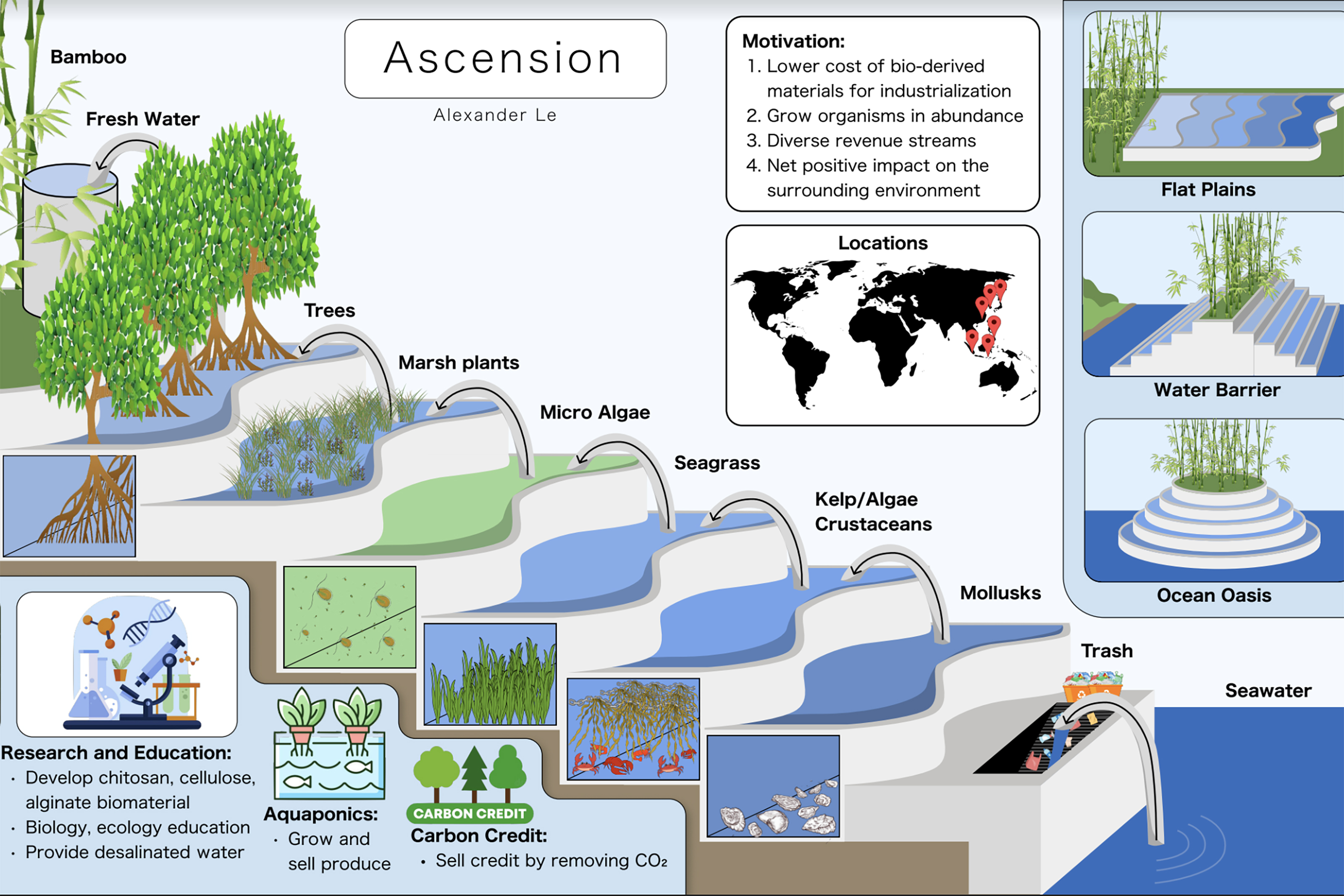
Le’s project addressed the issue of industrializing the production of bio-based materials in a sustainable, scalable and affordable way. “My solution focuses on the efficient and sustainable production of seaweed and algae/kelp,” he says. “Not only is the process of growing these organisms incredibly cheap and efficient, but they also serve as natural carbon sinks [with the ability to absorb carbon dioxide from the atmosphere].” The farm Le proposed would provide fresh water to local communities and ecosystems through a passive and inexpensive filtration system and could double as a public park, educational center or even a rental space for events.
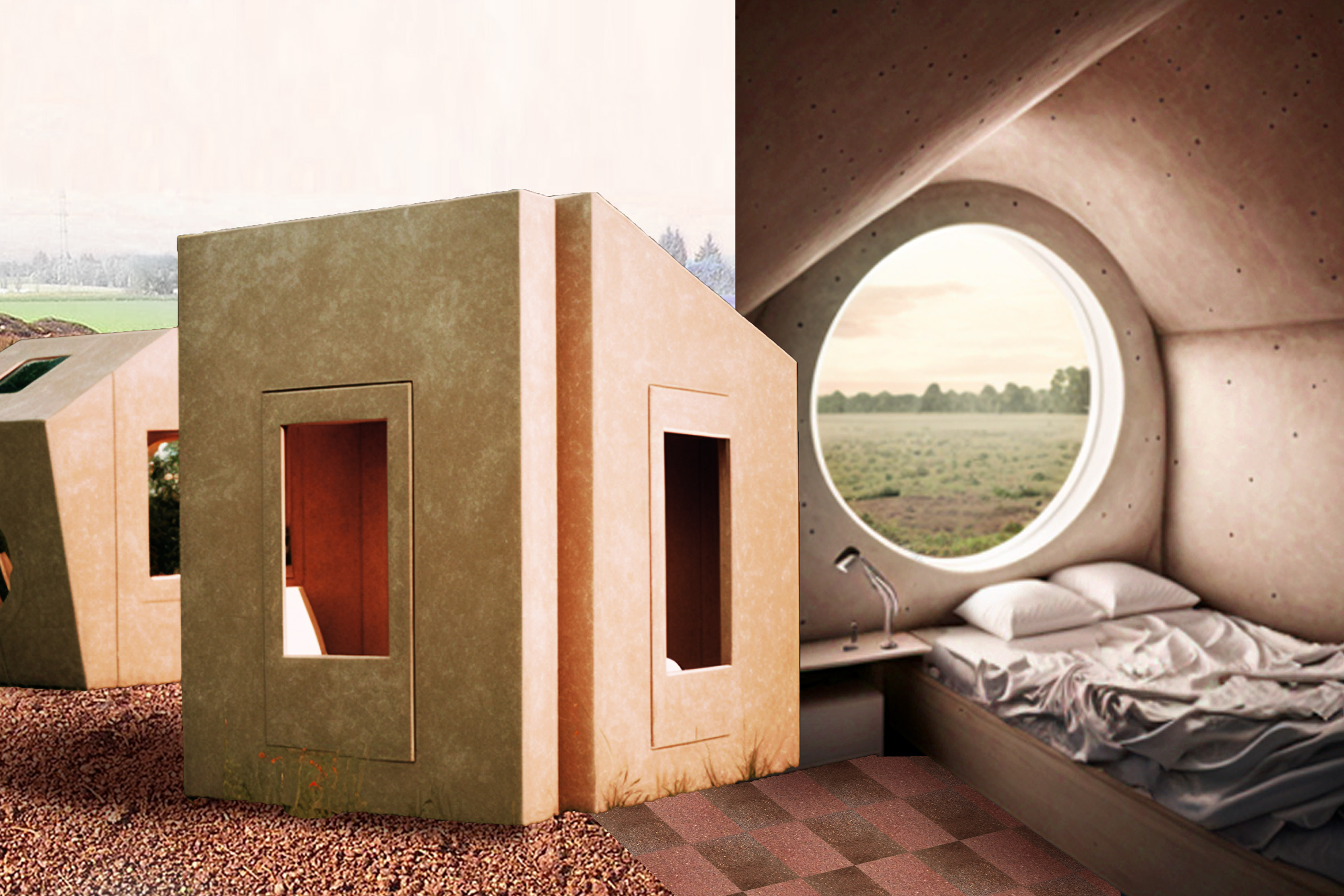
“I was happy to see industrial designers interested in more than products. . . . The course gave them the freedom to move sideways.”
Yeadon was encouraged by the students’ ability to think outside of their fields of study for the final project. “I was happy to see industrial designers interested in more than products,” he says, “and architects not only interested in how biodesign may be used in constructed environments or spaces. The course gave them the freedom to move sideways.”
—Isabel Roberts / photos by Arvind Bhallamudi
March 3, 2023


